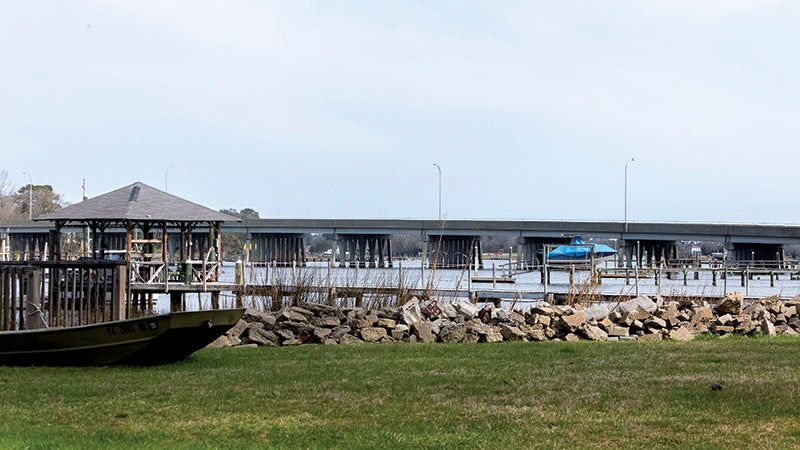The story of a bridge
Published 7:26 pm Friday, May 5, 2017

- The Hodges Ferry Bridge, viewed from the back yard of a Portsmouth home, connects Chesapeake’s Western Branch with Portsmouth. There really was a ferry that did that job long ago.
Long before there was an area known as Western Branch or an area known as Churchland, long before Chesapeake or even Portsmouth were cities, there was Norfolk County.
Norfolk County was the mother county for much of what is now Hampton Roads — Tidewater as many of us still think of it today — and it was a sprawling place encompassing both bustling port towns and vast expanses of farmland.
Even then, however, the residents of the different parts of that vast county were connected by trade, despite the rivers that separated them.
In fact, the rivers — those free-flowing and natural transportation lanes from whom Hampton Roads got its name — were a primary means of commerce during the colonial and post-colonial periods, and both the Eastern and Western branches of the Elizabeth River were busy with the traffic of that commerce. Farmers had their crops delivered to the towns of Norfolk, Berkley and Portsmouth via the river, and they received goods from those cities that helped them survive in the wilds of what are now Western Branch, Suffolk and Chesapeake.
One of those farmers was William Hodges, whose family had come to Virginia in the early part of the 17th century. One of his descendants, John Hodges, born in 1786, rose to the rank of Brigadier General of the 9th Brigade of the Virginia Militia in the War of 1812.
John Hodges seems to have been well known in Norfolk County, judging from a family history curated by the Patricia W. and J. Douglas Perry Library at Old Dominion University. He was postmaster in Portsmouth for a number of years, and he bought a tract of land that he called “Wildwood” along the banks of the Western Branch of the Elizabeth River. The property retains that name to this day and was featured in a previous edition of Western Branch Magazine.
From that property, General Hodges operated a ferry, but it seems that he long had ideas for something more permanent.
On Dec. 17, 1829, Hodges and Samuel Haynes submitted a request to the Virginia General Assembly for authorization to build a toll bridge to replace the ferry.
The ferry, they wrote, had become “useless and unprofitable” because of “the great inconvenience of crossing said ferry with horses and carriages in open boats….”
“Your petitioners therefore pray that a law may be [passed] authorizing them to erect a toll bridge across said branch in place of the ferry.”
Demonstrating that transportation issues were controversial in Virginia, even in the early 19th century, that request was soon followed by a petition signed by 29 men who were opposed to the idea on the grounds that it would impede trade along the river.
They wrote that “… such a bridge would greatly obstruct the navigation, being located at such a bleak place, it would be very difficult for a vessel to pass through, and almost entirely destroy our trade….”
The General Assembly seemed to have settled the matter on Feb. 6 of the following year, when it passed legislation allowing Hodges and Haynes to build their bridge.
The law set out tolls that could be collected — “For a man, five cents; for every horse, mare, mule or work-ox, the same; for all riding carriages, five cents per wheel; for every head of neat cattle, two cents each; and for every score of hogs, sheep or goats, ten cents.”
But the Assembly also established a sunset clause that required work to commence within three years and to be complete within five.
There is no record of Hodges ever building his bridge.
The first bridge to span the Western Branch of the Elizabeth River — a deck girder drawbridge — was built in 1929.
The 1979 Code of Federal Regulations of the United States of America warned boaters that they must give the Virginia Department of Highways eight-hours’ advance notice of a need for the draw to open.
In a 2007 story about Hodges Ferry, The Virginian-Pilot talked to Saunders Early, who told them that he had to wait for low tide to get his boat back home from downstream.
That drawbridge was replaced in 1982 with the fixed span that is there today. And the river traffic that petitioners were worried would be impacted by the bridge is no longer a factor.






